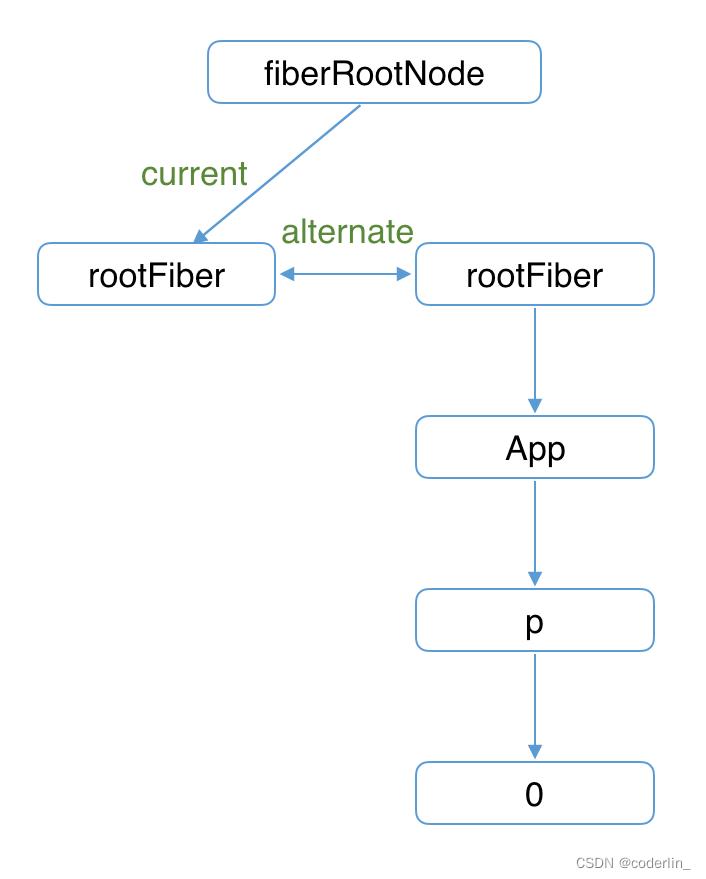react源码学习
Posted coderlin_
tags:
篇首语:本文由小常识网(cha138.com)小编为大家整理,主要介绍了react源码学习相关的知识,希望对你有一定的参考价值。
jsx
jsx会被转为createElement方法,看下源码这个方法
export function createElement(type, config, children)
接受三个参数:
- type元素类型,对于普通元素,就是div p ,对于函数组件,就是 函数本身, 对于类组件,就是类本身
- config 配置属性,比如ref, key, style…
- children 子元素
这个方法的主要作用就是: - 1 分离props属性和特殊属性
let propName;
const props = ; // 存储普通元素属性
// 待提取属性,react内部为了实现某些功能而存在的属性
let key = null;
let ref = null;
let self = null;
let source = null;
// 分离props属性和特殊属性
if (config != null)
// 判断是否是合法的ref
if (hasValidRef(config))
ref = config.ref;
// 判断是否是合法的key
if (hasValidKey(config))
key = '' + config.key;
// Remaining properties are added to a new props object
// 将其他属性存入props中
for (propName in config)
if (
hasOwnProperty.call(config, propName) &&
// 不是key self ref source的其中一个
!RESERVED_PROPS.hasOwnProperty(propName)
)
props[propName] = config[propName];
- 2 将子元素挂载到porps.children中
// 将子元素挂载到porps.children中
// 如果子元素有多个,就是一个数组
// 如果只有一个,就是一个对象
const childrenLength = arguments.length - 2;
if (childrenLength === 1)
props.children = children;
else if (childrenLength > 1)
const childArray = Array(childrenLength);
for (let i = 0; i < childrenLength; i++)
childArray[i] = arguments[i + 2];
props.children = childArray;
- 3 为Props属性赋默认值
// 3 为Props属性赋默认值
if (type && type.defaultProps)
const defaultProps = type.defaultProps;
for (propName in defaultProps)
if (props[propName] === undefined)
props[propName] = defaultProps[propName];
if (__DEV__)
if (key || ref)
const displayName =
typeof type === 'function'
? type.displayName || type.name || 'Unknown'
: type;
// 如果通过props去获取key或者ref,就会给你报错。
if (key)
defineKeyPropWarningGetter(props, displayName);
if (ref)
defineRefPropWarningGetter(props, displayName);
如果通过props获取Key和ref,在开发环境的时候还会报错。
- 4 创建并返回ReactElement
// 4 创建并返回ReactElement
return ReactElement(
type,
key,
ref,
self,
source,
ReactCurrentOwner.current,
props,
);
看下ReactElement
*/
const ReactElement = function(type, key, ref, self, source, owner, props)
const element =
// This tag allows us to uniquely identify this as a React Element
// 组建的类型,十六进制数值或者是SYmbol值
// React在最终渲染DOM的时候,需要确保元素的类型是REACT_ELEMENT_TYPE,需要此属性作为判断的依据
$$typeof: REACT_ELEMENT_TYPE,
// Built-in properties that belong on the element
// 元素的具体类型,span, div, class A , function App()...
type: type,
// key值, 元素的唯一标识,用做内部vdom比对提升dom操作性能。
key: key,
// ref值 存储元素DOM对象或者组件实例对象
ref: ref,
// 存储向组件内部传递的数据
props: props,
// Record the component responsible for creating this element.
// 记录当前元素所属组件(记录当前元素是哪个组件创建的)
_owner: owner,
;
返回一个vdom对象。
isValidElement
react内部提供了判断是否是标准ReactELemtn的方法
/**
* 验证object参数是否是ReactElement,返回布尔值
* 验证成功的条件:
* 是对象
* 部位null
* 并且$$typeof === React_ELEMNT_TYPE
*/
export function isValidElement(object)
return (
typeof object === 'object' &&
object !== null &&
object.$$typeof === REACT_ELEMENT_TYPE
);
验证成功的条件:
- 是对象
- 部位null
- 并且$$typeof === React_ELEMNT_TYPE(如果支持SYmbol就是一个SYmbol,如果不支持就是一个十六进制数)
React架构
React16版本的架构可以分为三层,调度层,协调层,渲染层。
Scheduler调度层
- react15的版本中,采用了循环加递归的方式进行了vdom的比对,由于递归使用js自身的执行栈,一旦开始就无法停止。直到任务执行完成。如果dom树的层级较深,就容易出现长期占用js主线程,导致gui渲染线程无法得到工作,造成页面卡顿。
- 在16的版本中,放弃了js递归方式进行vdom比对,而是采用了循环模拟递归,而且比对的过程是利用浏览器的空闲时间完成的,不会占用主线程,这就解决了vdom对比造成页面卡顿原因。
- 在window中提供了requestIdCallback的api,它可以利用浏览器空闲的时间执行任务,但是他自设能触发频率不稳定,并且不是所有浏览器都支持他。
- react自己实现了任务调度库,叫做Scheduler,如果浏览器支持postMessage,那么他就会采用postMessage来进行调度,不支持再使用setTimoute,setTimeout的缺点是连续调用setTimeout(()=>,0),最后会发现他的触发频率变成了4ms一次。并且Scheduler还采用了小顶堆算法,实现了任务优先级的概念。
Reconciler协调层
- react15的版本中,协调器和渲染器交替执行,找到了差异就更新差异,这也是15无法中断的原因,因为会造成页面渲染不完全。
- react16中,则是Scheduler和Reconciler交替工作,Scheduler负责调度,Reconciler负责找出差异,打上标记。等所有差异找完之后,才会交给Renderer统一进行DOM更新。这也是为什么react16可以实现可中断的异步更新的原因。
Renderer渲染层
- 渲染层工作的时候,是同步的,也就是无法中断的。可中断的异步更新的概念是描述Scheduler和Reconciler,他们是在内存中完成的。而Renderer是无法被中断的。
- 既然无法被中段,那么就不会出现dom渲染不完全的情况,因为渲染器的工作是一气呵成的,从0到1。
Fiber数据结构
fiber本质就是一个js对象。
export type Fiber =
/**-----------------实例相关---------------- */
// 标记不同的组件类型 ,比如函数组件是0,类组件是1....
tag: WorkTag,
key: null | string,
elementType: any,
// div p span class A function A() .....
type: any,
//实例 实例对象,比如类组件的实例,原生元素就是dom, funciton没有实例 rootFiber的stateNode是FiberRoot
stateNode: any,
/**-------- fiber相关--------- */
return: Fiber | null, //指向自己的父级fiber
child: Fiber | null, //指向大儿子fiber
sibling: Fiber | null, //指向兄弟节点fiber
index: number,
// fiber工作一般在workInprogress fiber,为了实现复用, alternate指向当前current Fiber得对应的fiber
// 等到工作完毕,workInprogress fiber就变成current Fiber,以此循环
alternate: Fiber | null,
ref:
| null
| (((handle: mixed) => void) & _stringRef: ?string, ... )
| RefObject,
/**----------- 状态数据相关-------------- */
pendingProps: any, // 即将更新的Props
memoizedProps: any, // 旧的props
memoizedState: any, // 旧的state
// Dependencies (contexts, events) for this fiber, if it has any
dependencies: Dependencies | null,
mode: TypeOfMode, //当前组件及子组件处于何种渲染模式, createRoot/render
/**-------- Effect副作用相关-------------- */
updateQueue: mixed, //该Fiber对应的组件产生的状态会存放到这个队列,比如update对象
flags: Flags, // effectTag标记,用来记录当前fiber要执行得DOM操作
subtreeFlags: Flags,
deletions: Array<Fiber> | null,
nextEffect: Fiber | null, // 单链表用来快速查找下一个sied effect
firstEffect: Fiber | null,// 子树中第一个side effect
lastEffect: Fiber | null, // 子树中最后一个last Effect
lanes: Lanes, // 优先级
childLanes: Lanes,
这里主要列了几种比较常用的,比如instance实例相关的属性,作为fiber相关的属性,状态数据相关得属性以及副作用相关的属性。
flags对应的标记是
export type Flags = number;
// Don't change these two values. They're used by React Dev Tools.
export const NoFlags = /* */ 0b00000000000000000000000000;
export const PerformedWork = /* */ 0b00000000000000000000000001;
// You can change the rest (and add more).
export const Placement = /* */ 0b00000000000000000000000010;
export const Update = /* */ 0b00000000000000000000000100;
export const PlacementAndUpdate = /* */ Placement | Update;
export const Deletion = /* */ 0b00000000000000000000001000;
export const ChildDeletion = /* */ 0b00000000000000000000010000;
export const ContentReset = /* */ 0b00000000000000000000100000;
export const Callback = /* */ 0b00000000000000000001000000;
export const DidCapture = /* */ 0b00000000000000000010000000;
export const ForceClientRender = /* */ 0b00000000000000000100000000;
export const Ref = /* */ 0b00000000000000001000000000;
export const Snapshot = /* */ 0b00000000000000010000000000;
export const Passive = /* */ 0b00000000000000100000000000;
export const Hydrating = /* */ 0b00000000000001000000000000;
export const HydratingAndUpdate = /* */ Hydrating | Update;
export const Visibility = /* */ 0b00000000000010000000000000;
export const StoreConsistency = /* */ 0b00000000000100000000000000;
双缓存技术介绍
- 在react中,DOM得更新采用了双缓存技术,双缓存技术致力于更快速得DOM更新。
- 举个例子,canvas绘制动画的时候,绘制每一帧动画之前就需要清除上一帧得动画,如果当前帧动画计算较长,就会导致出现替换白屏出现。为了解决这个问题,可以现在内存中构建当前帧动画,绘制完毕后直接替换上一帧,这样就不会出现白屏问题,这种在内存中构建并直接替换的技术叫做双缓存。
- React使用双缓存技术完成Fiber树的构建和替换,实现DOM的快速更新。
- 在react中最多同时存在两颗fiber树,当前屏幕显示的是current Fiber,发生更新的时候,react在内存中构建workInporgress fiber。并且在两颗中之间对应的fiber节点有一个alternate指针,通过这个指针,workInporgress的构建就可以最大化的复用current fiber。进而更快速的构建玩workInporgress fiber。
第一个mount的时候,会先创建FiberRottNode,他的current指针指向rootFiber,然后拷贝一份rootFiber,他就是workInprogress fiber的rootFiber了,然后将alternate指针指向这个复制的节点。通过这个复制的节点继续创建fiber。如

然后将右边构建完毕的workInprogress fiber树更新为current fiber。

update的时候,

workInporgress fiber可以通过alternate属性并且通过diff决定要不要进行复用。
最终构建完新的workInporegss fiber 树,然后再替换成current Fiber树。

区分FiberRoot和rootFiber
- FIberRoot表示Fiber数据结构对象,是Fiber数据结构的最外层对象
- rootFiber表示组件挂载点对应的fiber对象,比如React应用中默认组件挂载点就是id为root的div
- FiberRoot.current => rootFiber
- rootFiber.stateNode = FiberRoot
- 在react应用中,FiberRoot只有一个,而rootFiber可以有多个。因为render方法可以调用多次。
- fiberRoot会记录应用的更新信息,比如Reconciler完成工作之后,会将工作结果存储在FiberRoot中。
render方法
/**
*
* @param * element ReactElement, createElement的返回值
* @param * container 容器
* @param * callback 渲染后执行的回调函数
* @returns
*/
export function render(
element: React$Element<any>,
container: Container,
callback: ?Function,
)
if (__DEV__)
console.error(
'ReactDOM.render is no longer supported in React 18. Use createRoot ' +
'instead. Until you switch to the new API, your app will behave as ' +
"if it's running React 17. Learn " +
'more: https://reactjs.org/link/switch-to-createroot',
);
//判断是否是合法的容器
if (!isValidContainerLegacy(container))
throw new Error('Target container is not a DOM element.');
// 初始化FiberRoot和rootFiber
return legacyRenderSubtreeIntoContainer(
null,
element,
container,
false,
callback,
);
render方法主要接受三个参数
- element : ReactElement, createElement的返回值
- container 容器
- callback 渲染后执行的回调函数
然后判断是否是合法的container,最后调用legacyRenderSubtreeIntoContainer,他会创建FiberRoot和rootFiber并且开启调度。
react18之后使用render会报错。
以上是关于react源码学习的主要内容,如果未能解决你的问题,请参考以下文章